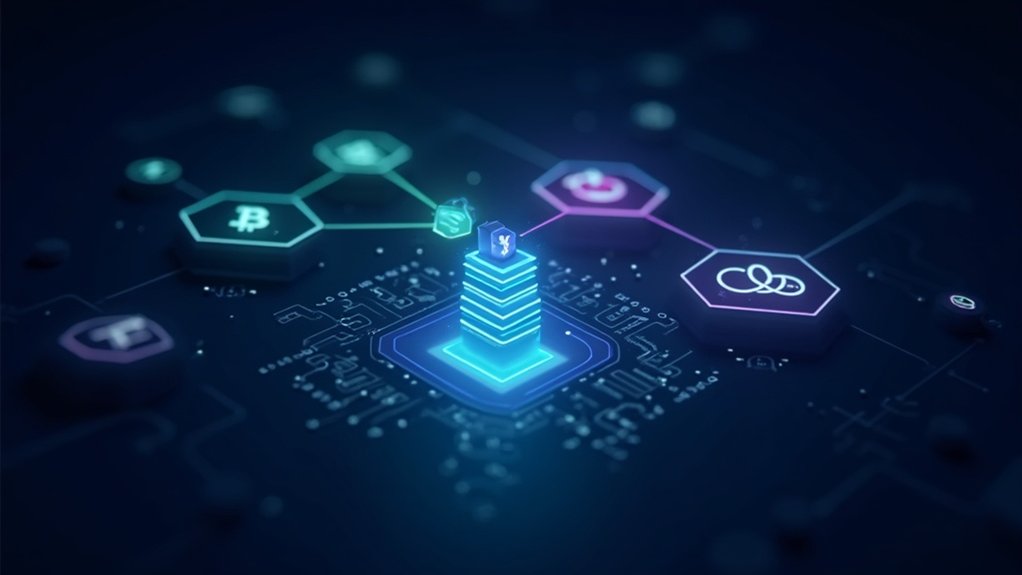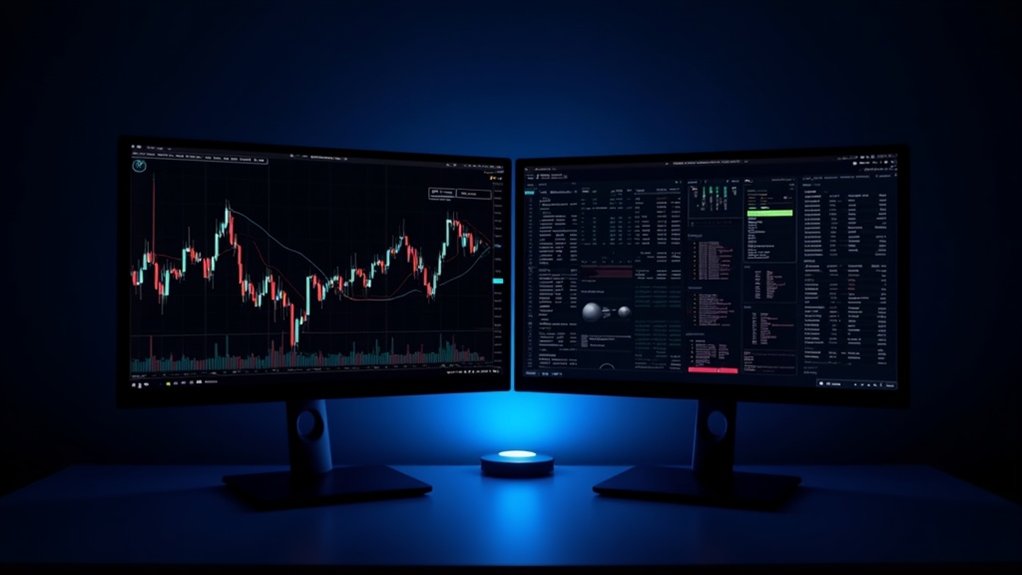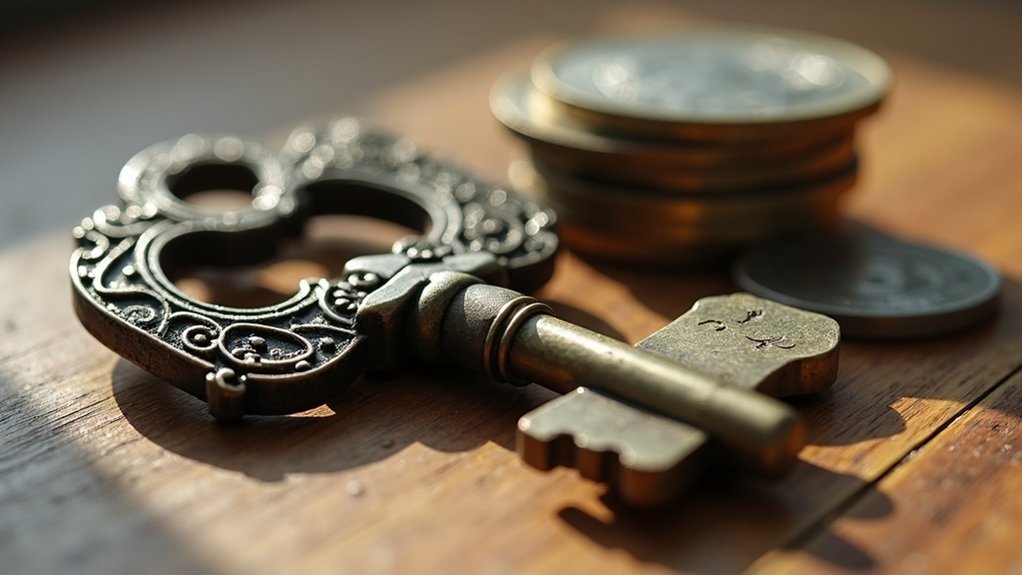Decentralization in crypto means no single authority controls the show. Transactions get validated by a network of computers (nodes) rather than banks or governments. Users actually own their assets through private keys. No middlemen, no permission needed. Bitcoin exemplifies this with roughly 20,000 nodes worldwide, making it resistant to hacks and shutdowns. Different cryptocurrencies vary in their decentralization levels—some talk the talk but don’t walk the walk. The rabbit hole goes much deeper.
Why does the crypto world obsess over decentralization? It’s simple. Decentralization strips power from the usual suspects—banks, governments, and other middlemen who’ve controlled money since forever.
In crypto, decentralization means spreading control across a network of participants instead of concentrating it in one place. No single entity calls the shots.
The system works through nodes—computers that validate transactions collectively. They reach consensus without anyone being the boss. Bitcoin does this. Ethereum does this. Not PayPal though. Definitely not Visa. Those are just distributed systems with central control. Big difference.
Security is a major upside. When your network has thousands of independent validators, good luck trying to hack it. You’d need to compromise most of them simultaneously. Not happening.
This creates fault tolerance that traditional systems can’t match. One node goes down? No problem. A hundred go offline? The network keeps humming. While nodes maintain network integrity, specialized mining nodes compete to create new blocks and secure the network through computational work.
Consensus mechanisms make this possible. Proof of Work, Proof of Stake—fancy terms for “how we all agree without a referee.” These protocols guarantee everyone plays by the same rules without needing a central authority. The blockchain stays intact, immutable, trustworthy. No reversing transactions because someone important made a phone call.
For users, this means actual ownership. Not the kind banks give you where they “hold” your money and let you use it sometimes. Real ownership. Your crypto, your keys, your control. No account freezes. No permission needed to send funds. No “banking hours.” Just peer-to-peer transactions whenever you want.
The degree of decentralization varies wildly between projects. Some cryptos talk big about being decentralized but have a handful of validators controlled by the same company. While Bitcoin boasts ~20,000 nodes worldwide, demonstrating impressive decentralization in practice.
Smart contracts further enhance decentralization by enabling automated execution of agreements without intermediaries, making platforms like Ethereum even more resilient against central control.
Others have thousands of independent nodes worldwide.
Ultimately, decentralization isn’t just tech jargon. It’s a fundamental shift in how value moves through the world. Trust the math, not the middleman. That’s the whole point.
Frequently Asked Questions
How Do Decentralized Systems Protect Against Censorship?
Decentralized systems fight censorship through distributed control. No single entity holds power.
Transaction verification happens across multiple nodes, making manipulation nearly impossible. Cryptographic security guarantees data remains tamper-proof, while pseudonymous transactions protect user identities.
Consensus mechanisms prevent any individual from controlling the network. Economic incentives discourage validators from censoring transactions—they’d lose money.
If one block builder excludes transactions, others will include them. Pretty clever system, actually.
Can Decentralized Networks Scale Effectively for Mainstream Adoption?
Decentralized networks are struggling to scale. The “trilemma” isn’t just theoretical—it’s a real headache.
Solana hits 65,000 TPS but sacrifices some decentralization. Bitcoin? A measly 7 TPS.
Layer 2 solutions, sharding, and sidechains show promise, but they’re not silver bullets. Cross-chain protocols help distribute load.
The tech’s improving daily, but mainstream adoption requires solving resource constraints and maintaining security without centralization.
Progress? Absolutely. Ready for global adoption? Not quite yet.
What Are the Environmental Impacts of Decentralized Consensus Mechanisms?
Decentralized consensus mechanisms vary drastically in environmental impact. Proof of Work is an energy hog, consuming electricity comparable to small nations. Bitcoin miners alone? Massive carbon footprints.
Meanwhile, Proof of Stake slashes energy use by over 99%. Night and day difference. Some networks are trying to clean up their act with carbon offsets and renewable energy.
The environmental debate isn’t going away. Ethereum’s switch to PoS was huge—less power, same security. Progress, but challenges remain.
How Do Decentralized Autonomous Organizations (DAOS) Make Decisions?
DAOs make decisions through token-based voting. Members holding governance tokens propose ideas and vote on them, with voting power typically proportional to token holdings.
It’s all transparent on the blockchain—no hiding bad calls. Decision-making follows a process: proposal submission, community discussion, formal voting, and automatic execution via smart contracts.
Not exactly speedy, though. Many DAOs establish working groups to handle specialized tasks, balancing decentralization with getting stuff done.
What Legal Challenges Do Decentralized Projects Face Across Jurisdictions?
Decentralized projects face a regulatory nightmare across jurisdictions. With nodes scattered globally, who’s in charge? Nobody knows.
Tokens might be securities—surprise!—exposing projects to hefty fines. DAOs exist in legal limbo without clear corporate structures.
Money laundering thrives in the shadows of anonymity. And good luck with data privacy compliance when information lives everywhere and nowhere.
Regulators are scrambling to catch up, but the blockchain doesn’t wait for permission slips.









